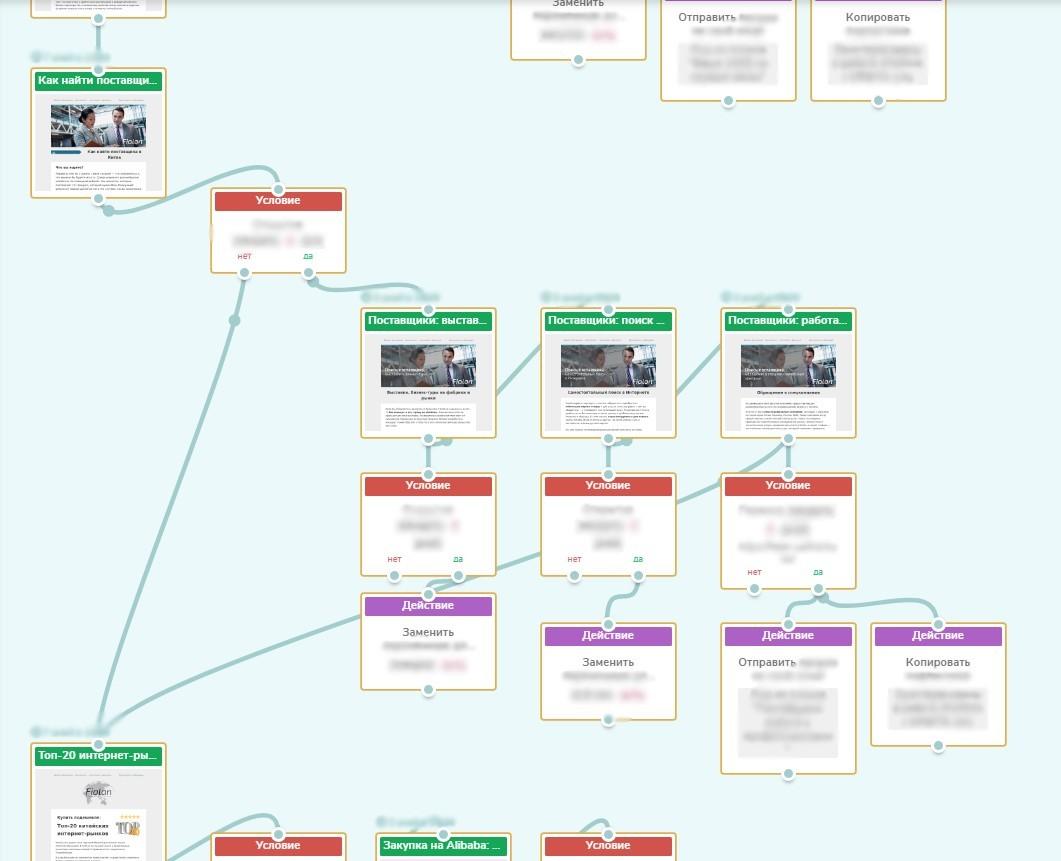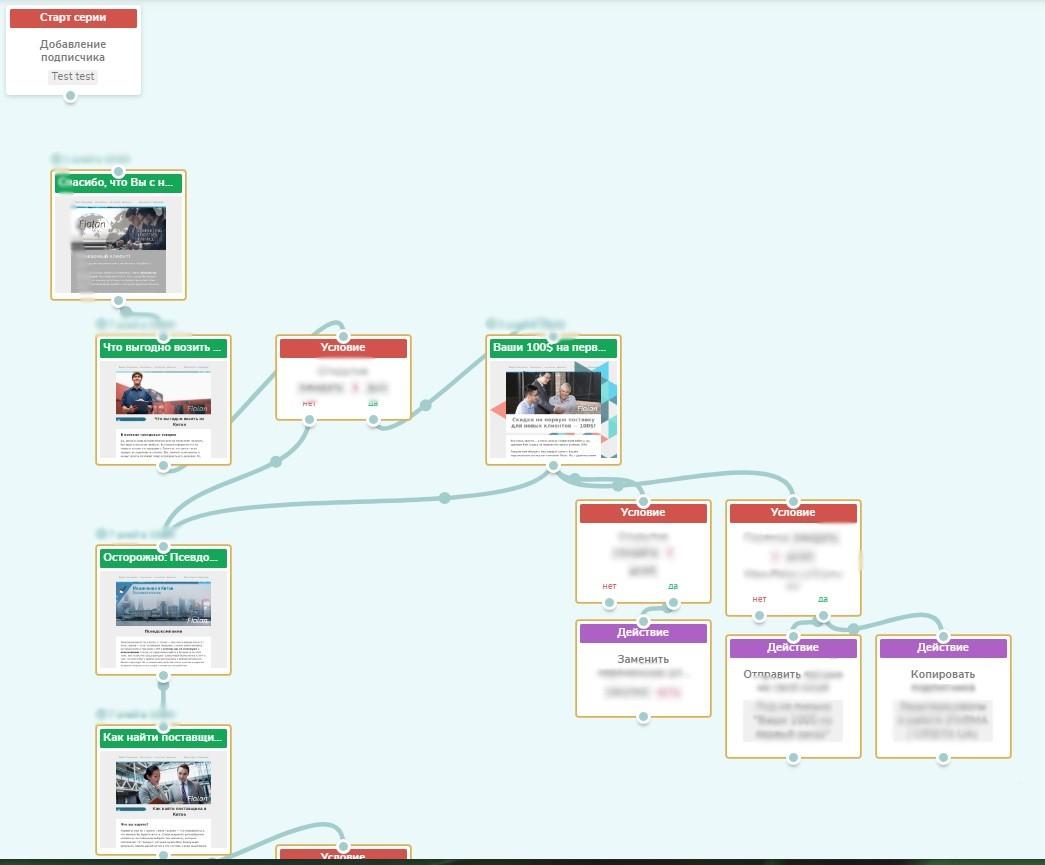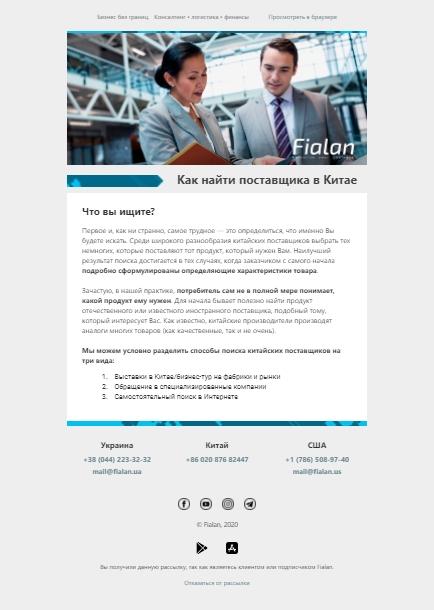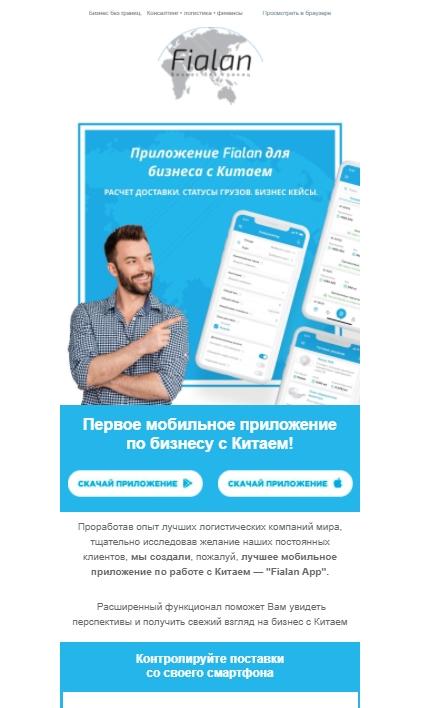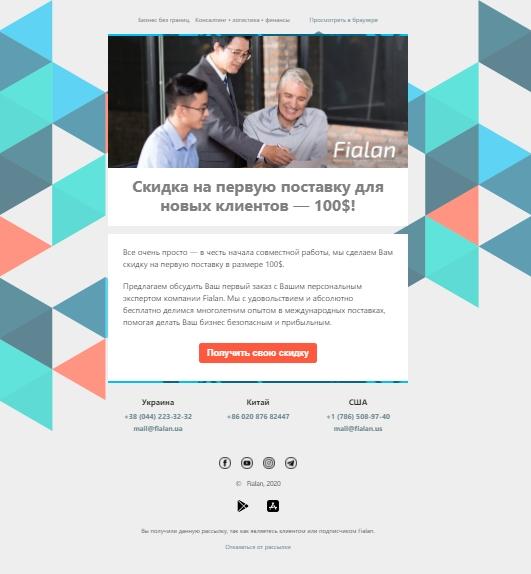case study
Email marketing for logistic
company
FIALAN


Location
Ukriane, CIS

Start date
July 2020

Category
Logistic

View
Website 
Task
- Convert current leads into customers;
- Adjust the collection and segmentation of new leads;
- Set up analytics;
- Build flows with a duration of six months or more;
- Create chains of letters with informative and educational content;
- Increase loyalty and trust in the company and its services;
Project features
- B2B market of Ukraine and the CIS;
- Two audiences that require a completely different approach;
- Scripts lasting six months or longer are required;
- Many touches are required before the customer decides to use the services;
Tools and services
Project description
Our client: A logistics company that helps in organizing business with China and other countries. Our task was to increase the conversion rate for orders on the site and for new registrations.

Solution
Email marketing for logistic company Fialan.ua
Our client: A logistics company that helps businesses in China and other countries.
Before starting the work, we conducted an audit to identify all problem areas, growth prospects, and the current state of the client’s email campaigns.
This is what we found:
The client has a lot of ready informational content that needs to be formatted and integrated into emails. There are two completely different audiences, one of which requires more frequent emails, with mostly educational content; the other needs less frequent reminders with more information about the company, its values, and numbers. Since it’s a B2B field, decision-making takes a lot of time. We needed to create long email chains with diverse content that would address several issues without being pushy.
The first step was to create scenarios and establish the logic of the email campaigns. This was necessary to proceed with creating the actual messages and templates.
We categorized all existing useful and interesting content. Each category was responsible for addressing a specific audience pain point. We also determined the necessary balance between informational and promotional content in the email chains to avoid coming across as spam. We added emails with offers for clients and created content briefs for content that needed to be written or published on the website (we also determined the ratio of links to in-email content).
We set up email chains categorized by trigger events (whether the user opened the email, clicked a link, etc.). They looked like this:
For all types of emails, we prepared a unique design in the client’s website style. Using our client’s branding, we created additional graphic elements and banners. Each category of emails had its templates, ensuring that the emails flowed together and conveyed a cohesive narrative.
As a result, we had several levels of email campaigns to regulate frequency and ensure relevance without being intrusive. Since sending a large number of emails to one client quickly can harm the overall strategy and potentially land our domain in a spam folder.
Those who interacted most actively with the emails received more messages, while the rest received fewer, less frequent messages that didn’t delve into topics they weren’t interested in. Users who showed a particular interest in a category were automatically tagged for further segmentation in the future.
RESULTS OF EMAIL MARKETING
To implement the plan, we created over 50 unique emails, 10 interest-based segments, 3 levels of email chains, and scenarios lasting up to 8 months.
Our main effectiveness indicator was the number of user requests for personal consultations with our client’s employees. This included form submissions on the website and clicks on the call-to-action buttons in the emails. We set up automated messages to managers with information on which contact to reach out to and regarding which request.
We created unique UTM tags for all links to track the effectiveness of different types of emails, link types, and levels of email campaigns using Google Analytics, as we didn’t have enough internal statistics from Unisender.
Since automated email campaigns were not conducted before, we’re evaluating the results for the last year, starting from the launch of the first emails. In our analysis, we see that the russian version of the website has the highest conversion rate for all goals via the email channel. The Ukrainian version lags behind but only in one channel.
+12%
Conversion rate on emails
+6 months
Length of email flows
+50
Unique emails
Results
View other cases


ARE YOU READY TO IMPROVE YOUR PROJECT WITH #UAATEAM?
We will be happy to discuss your project, along with your main goals and objectives. You can schedule a meeting with one of our managers.


